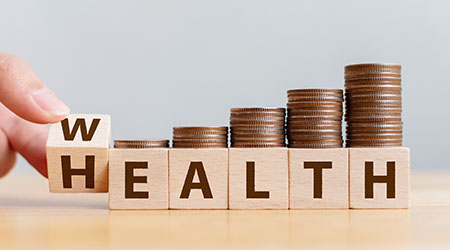The U.S Department of Agriculture (USDA) has made up to $500 million available to help rural healthcare facilities and communities, according to CBS. This money, part of the Biden administration’s Build Back Better agenda, can be used to expand access to COVID-19 vaccines, healthcare services, food assistance, telehealth, and support the construction or renovation of rural healthcare facilities.
Rural facilities can apply and submit requests for two types of assistance: recovery grants and impact grants. Recovery grants help public entities, nonprofits, and tribes provide immediate pandemic-related assistance to hospitals and clinics in their communities. Impact grants help these same healthcare facilities handle regional rural healthcare issues and build a more sustainable rural care system.
There are some requirements applicants must meet to gain access to this funding. They must plan and execute various strategies in order to develop healthcare systems that offer behavioral care, primary care and other medical services. They must also expand telehealth, data sharing, transportation, behavioral health, farmworker health and cooperative home care.
The USDA has another program called the Community Facilities Direct Loan and Grant Program, which is investing $266 million to enhance rural community facilities and essential services. The money will be distributed over 41 projects. Examples of other projects include a $23.4 million investment in a Nebraska health system for the construction of a new hospital; an $88 million loan given to a New Jersey heart and lung center to upgrade double-occupancy, in-patient rooms to private suits; and a $5 million loan given to a Michigan community hospital to purchase and renovate a nearby building for expanded services.
The U.S Department of Health and Human Services is providing $8.5 billion in American Rescue Plan funding. This money is to compensate healthcare providers who serve rural Medicare, Medicaid, and Children’s Health Insurance Plan patients for lost revenue and increased expenses associated with the pandemic. The goal is for providers to be able to deliver a sufficient response to pandemic-related issues and put them on stable financial footing to continue helping their communities.

 Building Disaster Resilience Through Collaboration
Building Disaster Resilience Through Collaboration Amae Health Expands to New York City
Amae Health Expands to New York City Hospital for Special Surgery Opens Two New Facilities in New Jersey
Hospital for Special Surgery Opens Two New Facilities in New Jersey Should We Be Testing Toilet Water in Patient Restrooms?
Should We Be Testing Toilet Water in Patient Restrooms? Healthcare Union Petitions for Increased Staff Safety at HCA Florida Hospitals
Healthcare Union Petitions for Increased Staff Safety at HCA Florida Hospitals